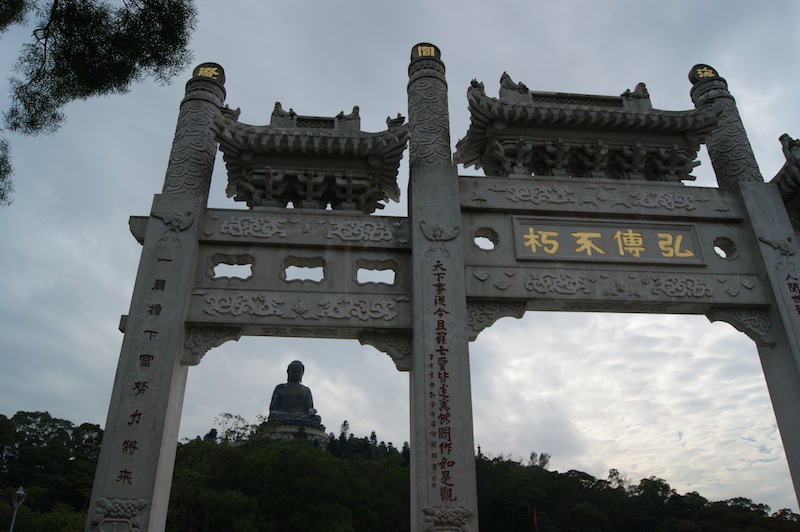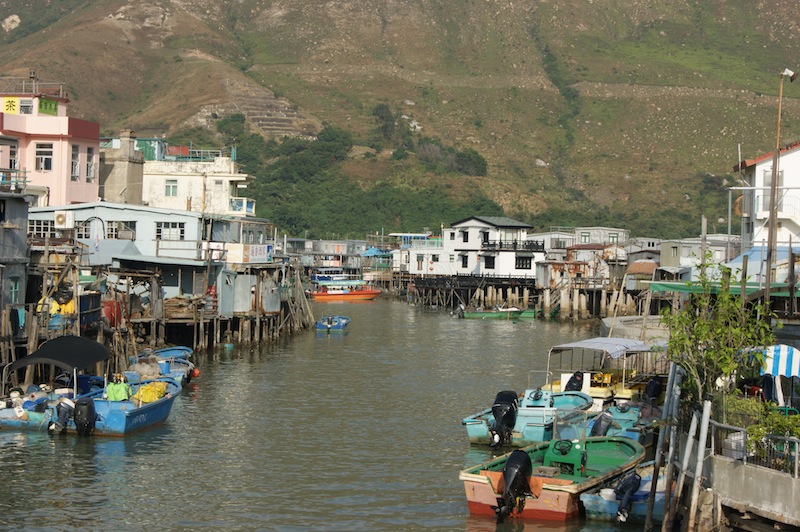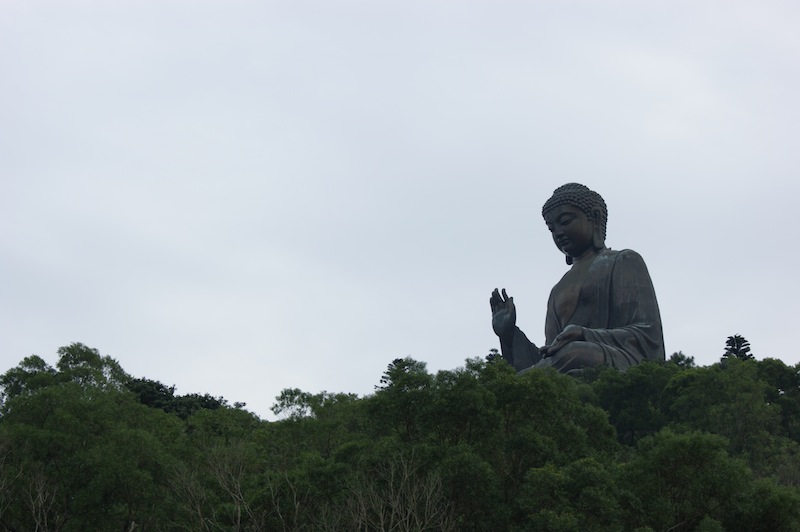There are things I don’t miss about Hong Kong and one of them is queueing. In a city of so many people – residents and tourists – waiting your turn is a frustrating part of everyday life, and we faced some seriously monster queues during our visit to Lantau Island.
We were going to see its famous giant Buddha at the Ngong Ping Plateau, reached by a cable car that climbs for about 25 minutes from the base station up into the clouds in the heart of the island. But first we had to negotiate the lift queue, a queue so monumental that it quite drained the life out of me just looking at it. It looked as if half of China had decided to join us on our day out. The pain was only relieved by the fact I could get wi-fi on my phone.
The cable car station at Tung Chung stands amid a big, modern and characterless town built to service the nearby Chep Lap Kok airport.

When we eventually got to board we chose a cabin with a glass floor, which made for some weird and wonderful moments as we headed off into the sky, the sea and the hills beneath us under our shoes. It’s not a ride for people with vertigo. As we climbed into the verdant hills of Lantau, the airport came into view amid the haze in all its sprawling, industrial glory. But from up high in our gondola, it looked more like a toy town with little toy planes.
Ahead of us, the landscape turned out to be much like that of nearby Lamma Island, green and lush, peppered with boulders and carved by walking trails. Below us we spotted ramblers making their way along, up and down the famous but clearly punishing Lantau Trail.

Our destination, the plateau, is famous for the Tian Tan Buddha – a giant bronze statue on a hill overlooking the nearby Po Lin Monastery. I’d always assumed that it was centuries old but to my surprise I found that it was only erected in the early 1990s. As we reached the end of our journey, it appeared above the trees looking enigmatic and majestic.
Sadly this spiritual marvel sits amid a fairly grim touristy site at the Ngong Ping Plateau, a collection of souvenir shops, large restaurants (we stopped at one for an average bite to eat) and various tacky opportunities the locals have dreamt up to part us from our cash. The Buddha looked inscrutably over this temple to commercialism and the accompanying wave of humanity, and it jarred.
Still, the long and punishing climb up the steps to the statue was more than memorable and only at the top did I realise just how big it is. The Buddha’s giant hands gestured to us as we circled and took photos, enjoyed the views and went inside to see a little display about the history of the site. Back at ground level, the monastery had some nice touches but was largely a building site during our visit.

We then made for the village of Tai O, taking a speedy taxi down winding mountain roads. Like the villages of Lamma, Tai O is not pretty in the conventional western sense but is famous for its houses and workshops built on stilts over the water. Some of these buildings looked very precarious, especially the ones put together out of recycled bits of wood, corrugated iron and plastic. The stilts, for a start, appeared far too narrow to put up with a choppy sea.
We walked through streets lined with shops selling traditional medicines and fish – fresh and dried. Salted fish are a speciality, a reminder of the time when the area had a vibrant salt production industry, and the smell was overpowering at times. But it was undoubtedly an atmospheric place, despite the crowds.
We took a quick boat trip out into the South China Sea to get a different perspective on the island and to try to spot the endangered Chinese white dolphins that were once so plentiful in the area. But other than a few distant glimpses, our trip proved fruitless. Still, it blew the cobwebs away as we bounced around on the waves back to shore and a risk-averse Graham looked nervous…

We headed back to Tung Chung on a bus, our route taking us across the lush landscape to the south of the island. We caught sight of lovely sandy beaches and some smart new developments, making it a prime site for sunshine breaks, but we also spotted a few grim prisons and an industrial dam.
Come night we went out to lively Soho and Lan Kwai Fong again and eventually settled for food at an Italian called Vivo. And very good it was too – especially the crab ravioli and beef carpaccio. Later we grabbed beers in a variety of bars but failed to find the gay ones we were searching for. Did they still exist I wondered? Still, I loved LKF – it really had a buzz and atmosphere to it behind those grey temples to capitalism.

